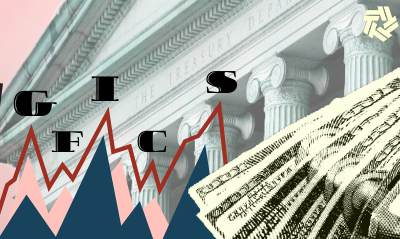

The changes in the TSP have pleased many. And rattled a lot of others. There have been widespread complaints about unanswered phone calls or e-mails.
Have you got what it takes to make the final cut, and maybe become a contestant on the popular TV show Jeopardy? Maybe become a millionaire? Interested? Take this test.
If you dare…
What weighs 990 million pounds, is worth $743 billion and has 6.6 million units found in every country of the world, every U.S. state, as well as Greenland and Antarctica. Oh, also in outer space.
Correct answer:
What is the federal Thrift Savings Plan, Uncle Sam’s in-house 401k for active and retired civil servants and government officials, and members of the military?
Everything about the TSP is big. It has more people than many countries. It has a net worth larger than many nations of the world. By almost any measure the TSP is the biggest kid on the block. Nothing in the 401k world in the private sector can touch it in size, scope, membership and value. It is an optional part of the retirement program for feds hired in the mid 1980s who are under the Civil Service Retirement System. CSRS covers most currently retired government workers or their survivors.
For most people currently on the federal payroll, under the Federal Employee Retirement System, the TSP is a must. FERS employees who invest at least 5% in the TSP can qualify for a match of up to 5%. FERS workers also qualify for, and pay into, Social Security. But because their starting annuities are smaller than their CSRS counterparts (same salary and length of service), and because their annual cost of living raises don’t match inflation once it exceeds 2% (it’s now about 9%), they must invest in TSP to have the same total income in retirement.
When Congress set up the TSP (which also covers members of Congress) the rule was KIS: Keep It Simple. And keep it cheap (as in low administrative fees) so investors could keep more of their earnings. As to earnings, Congress said give investors a wide range of choices. Up to a point. That included a C fund which covers large cap U.S. stocks, the S fund which covers small caps and an international fund, the I fund. Plus the unique never-has-a-bad day Treasury securities G fund. And the F fund invested in bonds. Plus a series of self adjusting target date funds. But all relatively easy to operate and manage.
Now there is a new kid on the block. Earlier this year the TSP announced that in addition to a number of streamlining changes, it would allow participants to invest some of their total TSP nest egg into 5,000-plus mutual funds. Including ESGs, which are defined as “portfolios of equities and/or bonds for which environmental, social and governance factors have been integrated into the investment process. This means the equities and bonds contained in the fund have passed stringent tests over how sustainable the company or government is regarding its ESG criteria.”
Some would call the ESGs “passion funds” because, in addition to returns, the investor wants to put their money where their mouth is. Whether its save-the-whales or environment to political or social causes. There was also heavy, bipartisan political pressure on the TSP for decades to give private mutual funds a piece of the lucrative federal market, with its 5% government match. The TSP is doing it, with a special group of new fees both for participation and for each transaction. Those fees will not apply to people who keep their investments inside the TSP.
The changes in the TSP have pleased many. And rattled a lot of others. There have been widespread complaints about unanswered phone calls or e-mails. Difficulty in getting quick answers, etc. Rep. Eleanor Holmes Norton (D-DC) wants Congress to probe the new TSP program.
The TSPs’ governing body, the Federal Retirement Thrift Investment Board, met yesterday for its monthly meeting. Federal News Network’s Drew Friedman covered it. She’ll be my guest today (10 a.m. EDT) on our Your Turn radio show. In addition to the many TSP changes, and likely congressional hearings, she’ll talk about the outlook for a bigger-than-usual federal pay raise, and possibly the highest inflation catch-up adjustment in decades for retirees. If you have questions for her please send them to me (mcausey@federalnewsnetwork.com) before the show begins, and I’ll ask her.
Contrary to popular belief, George Washington’s dentures were never made out of wood. He owned multiple sets, including one carved out of hippopotamus ivory.
Source: Washington Library at Mount Vernon
Copyright © 2024 Federal News Network. All rights reserved. This website is not intended for users located within the European Economic Area.
Mike Causey is senior correspondent for Federal News Network and writes his daily Federal Report column on federal employees’ pay, benefits and retirement.
Follow @mcauseyWFED


